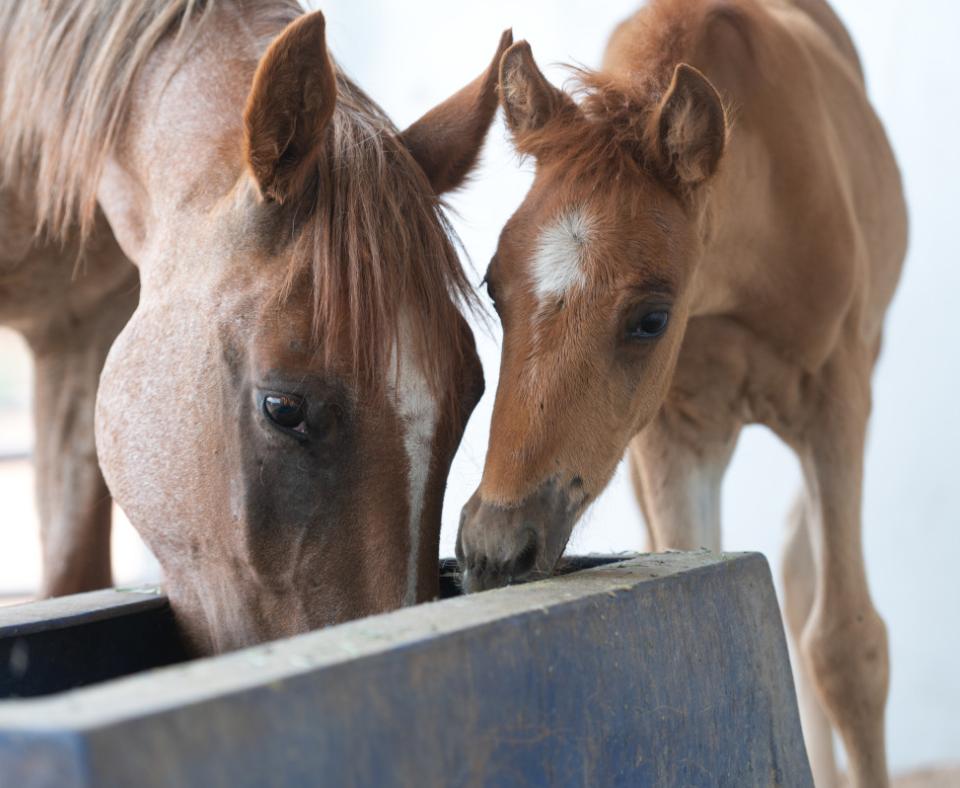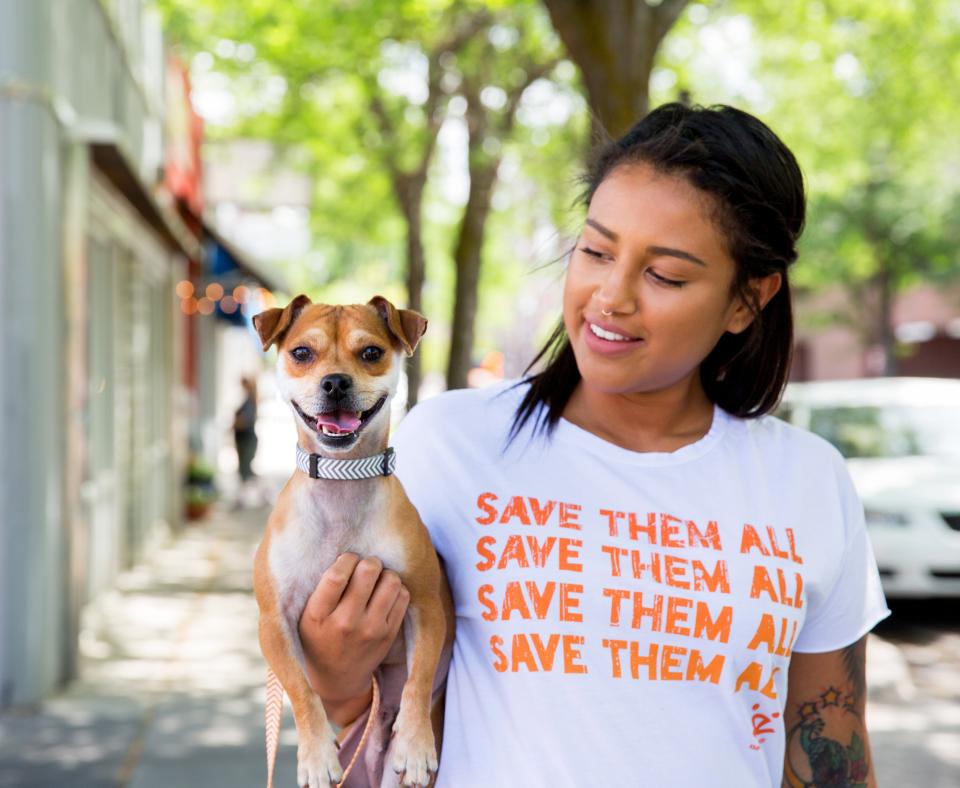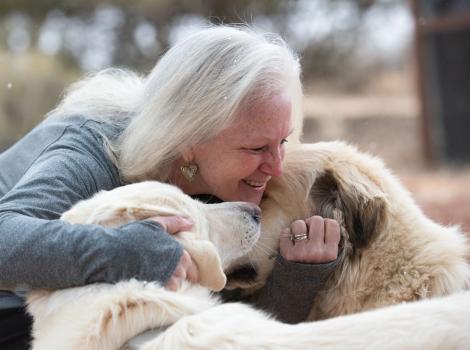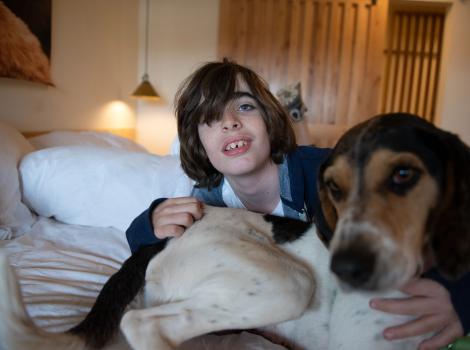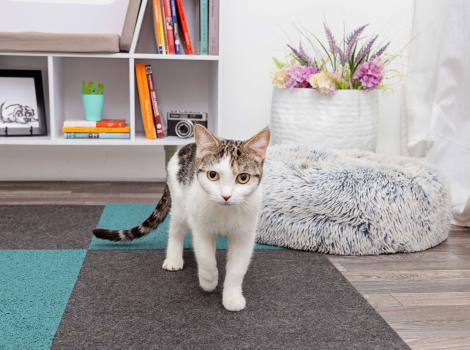Celebrating animal moms and ‘aunties' at Best Friends

Teeny-tiny piggy snoots and hooves zooming through tall grass. Peals of laughter from delighted onlookers. Tufts of downy cream-colored fur floating lazily in the breeze as two foals shed their soft winter coats. Fuzzy owlets cuddling up to a stuffed animal owl. Velvety white ears flopping adorably as two baby goats frolic in their stall.
Warmer weather can bring an influx of mamas and babies who need some help here at Best Friends Animal Sanctuary, and baby season is in full swing especially at Marshall’s Piggy Paradise aka “the nursery.” Sometimes animals arrive at the Sanctuary pregnant, which was the case with two goats and a pig who came to the Sanctuary this spring.
Like human moms, animal moms also can use some help raising their bundles of joy — especially if your bundles of joy are four boisterous piglets who chew and jump on everything and everyone.
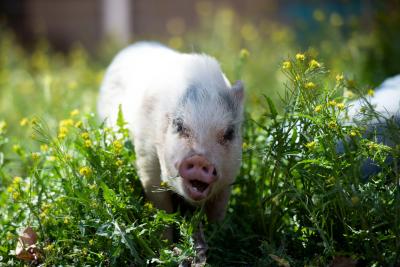
Piglet paradise
Delilah and her older piglets, Brooke and Albert, are Vietnamese potbellied pigs who came to the Sanctuary from a Best Friends Network Partner in Los Angeles. Staff quickly discovered Delilah had arrived already pregnant again, and she gave birth to four bouncing babies just two weeks later.
Of the new piglets, Waldo sports a chocolate brown coat while Winston, Magnolia, and Josie have pale pink skin sprinkled with dark spots. All of them have ridiculously adorable little snoots and hooves and love to play. Piggy zoomies occur on a regular basis, and Winston — the most outgoing of the bunch — is always ready to chew on your shoelaces (a no-no) or flop down for some tummy rubs after a romp in the pool (yes please).
Mom and babies live with their beloved big sister Brooke and unwitting "grandma" Willow in the main courtyard at Piggy Paradise.
"Brooke has been patient with the babies. ... She's been very playful, very patient, and very sweet, but she also corrects them every now and then to teach them what is OK behavior and what isn’t," says Best Friends caregiver Morgan Tippetts. “They want to climb on everything; they’re everywhere! So it's good for her and the babies to play, and then Mom can nap and have some alone time."
However, this now-bustling courtyard full of rambunctious piglets plus their big sis and mama is quite a change for 12-year-old Willow.
“Willow typically doesn’t do well with change, but she took all of this like a champ. She had to be introduced to both Brooke and Delilah and establish herself as the boss — especially with Brooke, who can be kind of naughty,” says Morgan. “Willow didn’t see the babies as a threat though and is super patient with them, even when they're all up in her face. She's become an amazing grandma.”

Equine aunties to the rescue
"Aunties" — older female horses — play a special role in shaping the behavior and personality of young horses. They find the delicate balance between disciplining young horses without being too harsh and providing guidance without being too soft.
“The aunties are often better at teaching manners than the mamas are. The mamas get kind of worn down and tolerant,” says Ann Hepworth, Best Friends senior equine trainer. “They may not be as strict with them as they should be, which is why it's important to have aunties or uncles.”
Filles (young female horses) Marina and Bell are thriving in Horse Haven — the area of the Sanctuary where the horses reside — under the tutelage of their favorite aunties, Rose and Doxy. Bell was born at Horse Haven after her pregnant mama was rescued from a neglect case. Marina and her mother, Emma, arrived a few months later from a dramatic rescue after being marooned on a beach by rising waters.
Doxy is a gorgeous bay mare who is often described “as sweet as the day is long.” She arrived with Bell’s mom, Liberty, from the neglect case, along with 31 other hooved animals. Doxy and Liberty were already pals because the large herd had been kept together in their previous pasture, so Doxy was the natural choice for auntie after Bell was born.
[First frolicking foals born at Best Friends]
Rose is also a stunning bay mare with a long, flowing mane and tail. She arrived just a few weeks after Marina and Emma, so the trio was housed together in the quarantine area reserved for new horses. They quickly bonded, allowing Rose to step flawlessly into her new role as auntie. Marina often spent more time with Rose than with her mother, who didn’t seem to mind. Emma needed a break, and Rose loved doting on little Marina. Eventually, all the aunties, mommies, and babies moved to their own family pasture.
“Having aunties has been nice because it also helps with the weaning transition," says Kristie Gerard, Horse Haven caregiver and supervisor. "These four big girls lived together with the babies for so long that the babies got used to Auntie Rose and Auntie Doxy. They saw the aunties as protectors. So when it was time to separate moms and babies, it was not a big deal.”
Weaning helps them transition from nursing to self-reliance. If it’s done too abruptly, then the babies can develop unhealthy behaviors due to separation anxiety. Thanks to their devoted aunties and mamas, Marina and Bell are well-adjusted, polite little fillies who are a joy to be around.

A most unusual mother
Spring is also a busy time for the staff at Wild Friends, Best Friends’ state and federally licensed wildlife rehab center. A clutch of barn owl eggs and two hatchlings arrived after their nest had accidentally been transported on a hay truck. Mother barn owls build their nests by hollowing out a small section between hay bales stored in — you guessed it — barns. Multiple bales of hay are loaded onto trucks, so it’s often difficult to see the nest until the bales are offloaded at another location, usually miles away from the original site.
The downy, slightly alien-looking hatchlings needed a mom — and fast. That’s when a most unusual mother stepped in: a stuffed toy barn owl. “I bought her online. It's just a little kid’s stuffed toy, but the babies seem to love her,” says Lauren Ross, Wild Friends senior caregiver.
For older owlets, Lauren keeps the stuffed owl “mom” away from the nest all day, so she appears to be hunting, only visiting the babies during feeding times. But for these latest young ones, she introduced the stuffed toy into the nest, which they adored. The needy hatchlings cuddle up next to her and try to tuck their little bodies underneath her.
“They even peck at the side of her face to get her to regurgitate food like she would in wild. When we see that, we feed them," says Lauren.
These tiny raptors are flourishing and are now completely covered in a fine layer of soft fuzz. Their adult plumage is beginning to develop, but they still have a lot of growing up to do before they can be released into the wild. They also still need the comforting love of a mother and have taken matters into their own hands — or rather beaks.
[Bringing up orphaned barn owls]
“We put the mama owl just outside of the nest box, so it looks like she’s watching over them. But there are times when I'll find her inside the nest box. I think they must be coming to get her; I'm not sure how though,” says Lauren. “They might be pulling her in with their beaks. It’s super cute. I think they see her as mom, even though they must know it's an inanimate object. They still find comfort and protection with her.”
Moms are the ultimate superheroes, but even superheroes need a little help now and then, and these special animal “moms” are doing just that.

Let's make every shelter and every community no-kill by 2025
Our goal at Best Friends is to support all animal shelters in the U.S. in reaching no-kill by 2025. No-kill means saving every dog and cat in a shelter who can be saved, accounting for community safety and good quality of life for pets.
Shelter staff can’t do it alone. Saving animals in shelters is everyone’s responsibility, and it takes support and participation from the community. No-kill is possible when we work together thoughtfully, honestly, and collaboratively.
